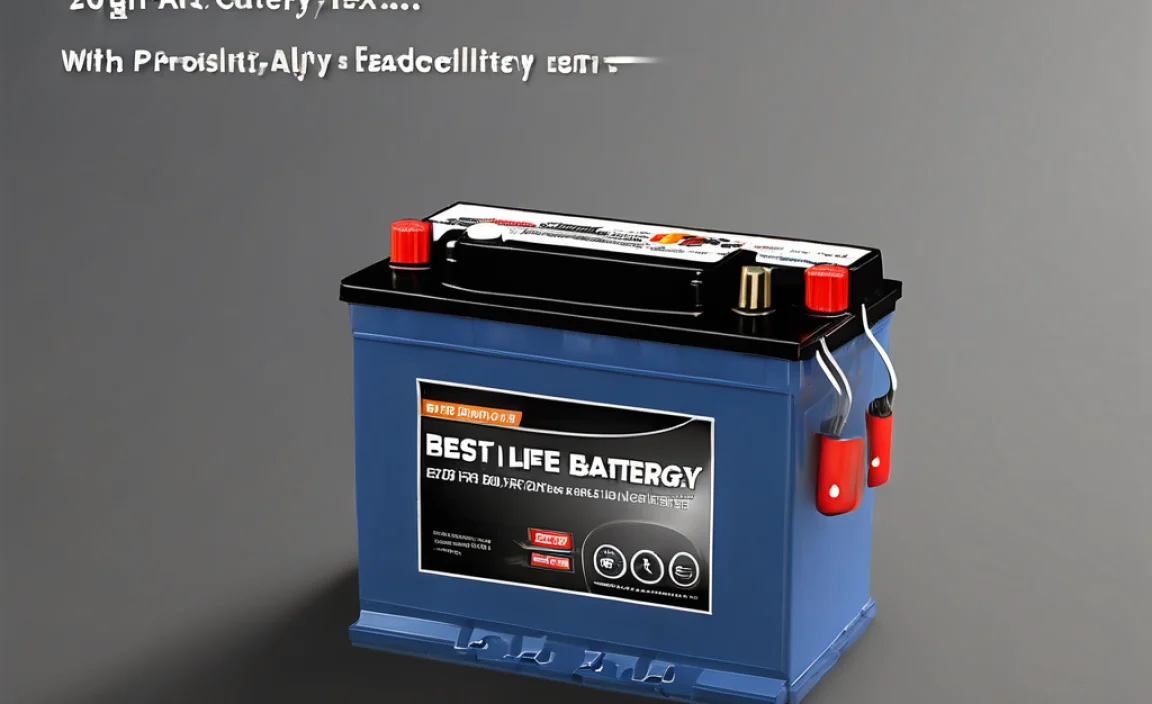Unleashing the Power: Choosing the Right 12V Four Wheeler Battery
The heart of any four-wheeler’s capability lies in its ability to endure demanding terrains and power through challenging adventures. At the core of this power lies a crucial component: the 12 volt battery for four wheeler. This seemingly simple, yet vital, piece of equipment is responsible for everything from the initial ignition crank to powering essential accessories like lights, winches, and GPS units. Selecting the right battery isn’t just about finding a replacement; it’s about investing in reliability, performance, and ultimately, the freedom to explore without limits.
When embarking on the search for a new battery, understanding the nuances of a “powerful 12V four wheeler battery” is paramount. It’s not merely about voltage; it’s a complex interplay of capacity, cranking amps, terminal type, and battery chemistry, all designed to withstand the vibrations, shocks, and environmental extremes that come with off-roading. A weak or improperly suited battery can lead to frustrating breakdowns, leaving you stranded when you least expect it. Therefore, a thorough examination of your options, coupled with an understanding of your four-wheeler’s specific needs, is the first step towards ensuring a robust and dependable power source.
Understanding the Key Metrics of a 12 Volt Battery for Four Wheeler
To truly grasp what makes a 12 volt battery for four wheeler “powerful,” we need to delve into the technical specifications that dictate its performance. The first and most often discussed metric is Cold Cranking Amps (CCA). This number indicates the battery’s ability to deliver a surge of current at freezing temperatures, crucial for starting the engine in colder climates or after prolonged inactivity. Higher CCA generally signifies a more robust battery capable of overcoming greater resistance during the initial engine turn.
Equally important is the Reserve Capacity (RC). This represents the number of minutes a fully charged battery can deliver 25 amps at 80°F before dropping below 10.5 volts. A higher RC means your battery can power accessories for a longer duration if the charging system malfunctions or during extended periods of engine-off operation. For riders who frequently use winches, powerful lighting systems, or other power-hungry accessories, a high RC is a non-negotiable feature.
Beyond these primary metrics, consider the Ampere-hour (Ah) rating. This indicates the battery’s total energy storage capacity. While CCA and RC are more directly related to starting power and sustained accessory use, Ah provides a broader picture of how long the battery can theoretically supply a certain amount of power. Matching these specifications to your four-wheeler’s engine size, electrical demands, and typical operating conditions is crucial for optimal performance and longevity.
Types of 12 Volt Batteries for Four Wheeler: Finding Your Perfect Match
The landscape of 12 volt battery for four wheeler technology offers several distinct chemistries, each with its own advantages and disadvantages. Understanding these types will help you make an informed decision based on your budget, performance expectations, and maintenance preferences.
Flooded Lead-Acid (FLA) batteries are the traditional workhorses and often the most affordable option. They require periodic maintenance, such as checking and topping off electrolyte levels with distilled water. However, they can be more susceptible to vibration damage and may leak if not kept upright. Despite these drawbacks, they offer a good balance of performance and cost for many recreational riders.
Absorbed Glass Mat (AGM) batteries represent a significant upgrade in performance and durability. In an AGM battery, the electrolyte is absorbed into fiberglass mats between the lead plates. This sealed design makes them completely spill-proof, vibration-resistant, and maintenance-free. They generally offer higher CCA ratings and faster recharging capabilities compared to flooded batteries, making them an excellent choice for demanding applications and riders who value convenience and ruggedness.
Lithium-ion (Li-ion) batteries, while still less common and typically more expensive, are gaining traction in the powersports world. They are significantly lighter than lead-acid batteries, offering a noticeable weight reduction for your machine. Li-ion batteries boast excellent power delivery, a very long lifespan, and can handle deep discharge cycles without significant degradation. Their energy density is incredibly high, meaning they can store a lot of power in a small package. However, they typically require a specific charger and may be more sensitive to extreme cold.
Factors Beyond the Specs: Choosing a Reliable 12 Volt Battery for Four Wheeler
While CCA, RC, and battery chemistry are critical, other factors contribute to selecting a truly powerful and reliable 12 volt battery for four wheeler. The build quality and brand reputation play a significant role. Opting for a battery from a reputable manufacturer known for producing durable and high-performing powersports batteries can save you headaches down the line. Look for warranties that offer peace of mind, as a good warranty often reflects the manufacturer’s confidence in their product.
The terminal configuration is another often overlooked detail. Ensure the battery you choose has the correct terminal type (e.g., top post, side post) and orientation to seamlessly integrate with your four-wheeler’s existing wiring harness. Incorrect terminals can render even the most powerful battery useless.
Finally, consider your typical riding environment and usage patterns. Do you often ride in extreme heat or cold? Do you frequently use a winch or other high-draw accessories? How regularly do you ride? Answering these questions will help you prioritize which battery specifications and types will best serve your needs. For example, a rider who frequently uses a winch in cold weather will benefit immensely from an AGM battery with a high CCA rating. Conversely, a casual rider in temperate climates might find a quality flooded lead-acid battery to be perfectly adequate and more cost-effective.
In conclusion, unlocking the full potential of your four-wheeler starts with understanding the power behind its performance. By carefully considering the specifications, chemistries, and practical factors that define a powerful 12V four wheeler battery, you can ensure your machine is always ready to tackle the next trail, expedition, or adventure with unwavering reliability.

